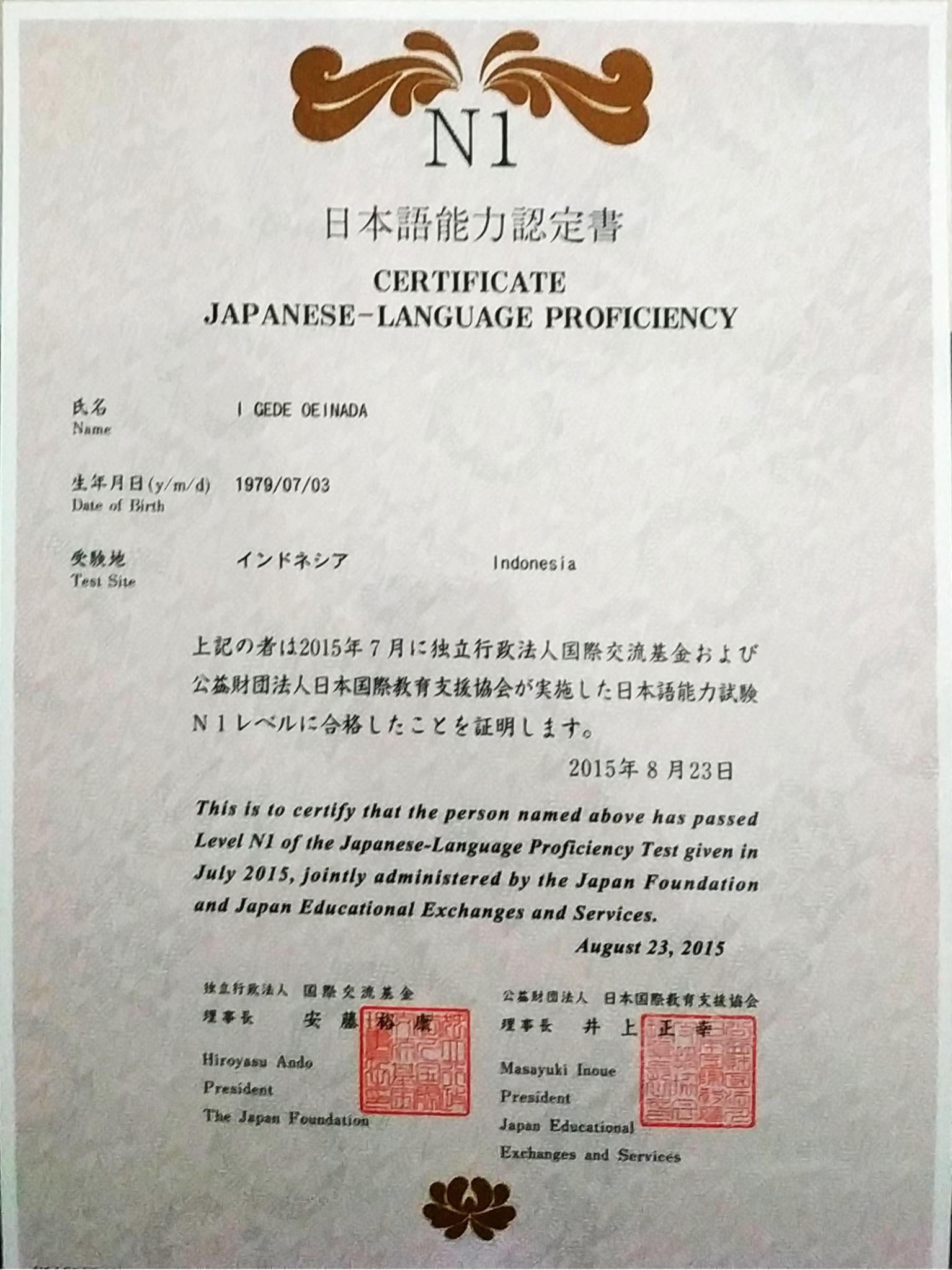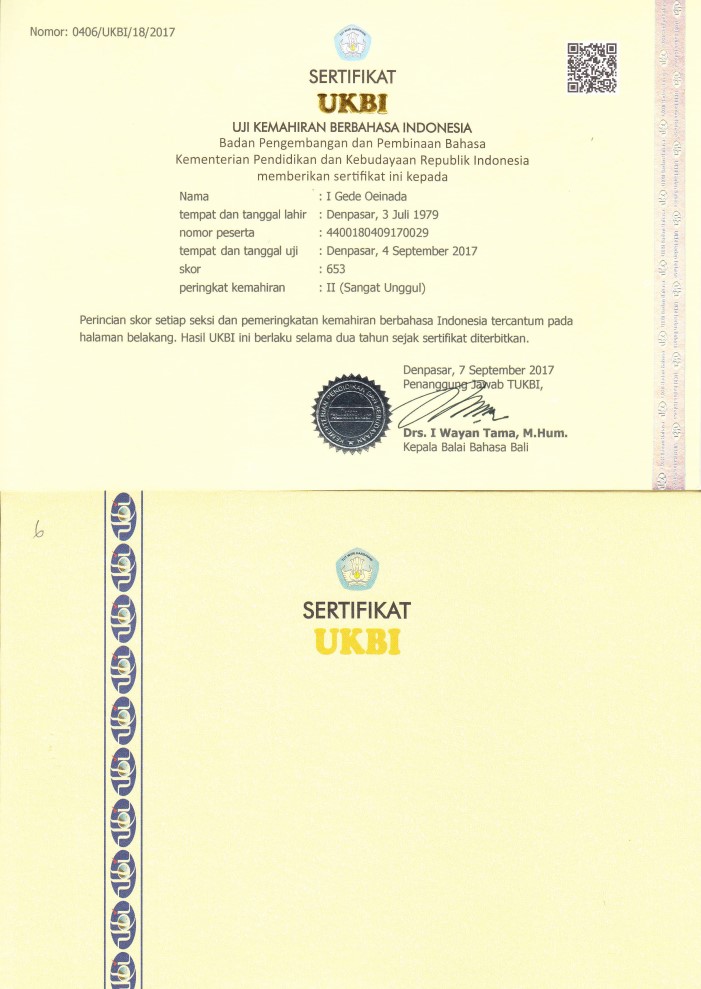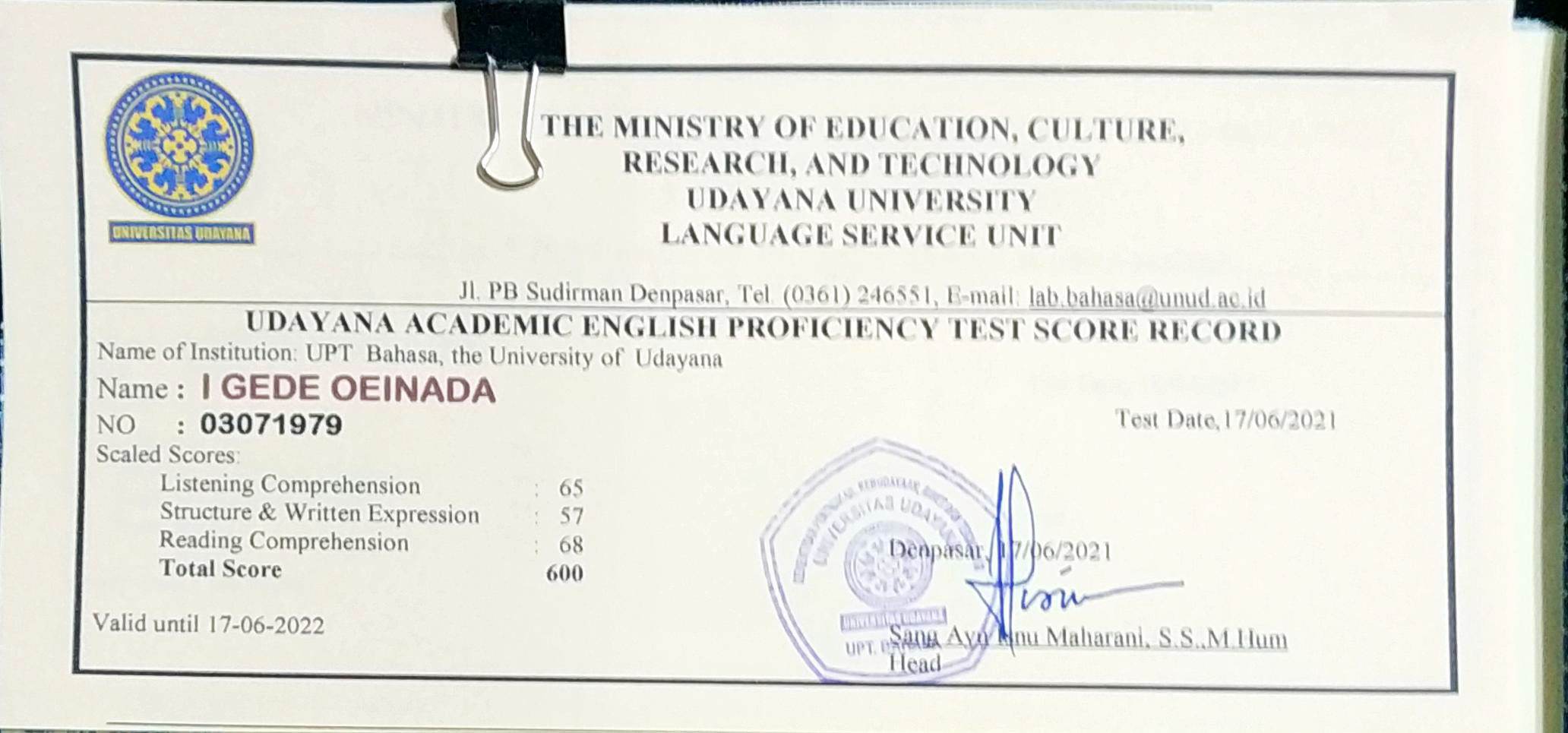Photo
N1 Certificate Japanese-Language Proficiency
The Japanese-Language Proficiency Test (日本語能力試験, Nihongo Nōryoku Shiken), or JLPT, is a standardized criterion-referenced test to evaluate and certify Japanese language proficiency for non-native speakers, covering language knowledge, reading ability, and listening ability. The revised test pattern was implemented in 2010. The test consists of five levels: N1, N2, N3, N4, and N5, with N1 being the highest level and N5 the lowest. Estimated study hour comparison data for students residing in Japan, published by the Japanese Language Education Center:JLPT Study Hour Comparison (Data 2010-2015)LevelStudents with kanji knowledge (e.g. speakers of Chinese)Other students(no prior kanji knowledge)N11700–2600 hours3000–4800 hoursN21150–1800 hours1600–2800 hoursN3700–1100 hours950–1700 hoursN4400–700 hours575–1000 hoursN5250–450 hours325–600 hoursLevelA summary of linguistic competence required for each levelN1Advanced Level: The ability to understand Japanese used in a variety of circumstances.ReadingOne is able to read writings with logical complexity and/or abstract writings on a variety of topics, such as newspaper editorials and critiques, and comprehend both their structures and contents. One is also able to read written materials with profound contents on various topics and follow their narratives as well as understand the intent of the writers comprehensively.ListeningOne is able to comprehend orally presented materials such as coherent conversations, news reports, and lectures, spoken at natural speed in a broad variety of settings, and is able to follow their ideas and comprehend their contents comprehensively. One is also able to understand the details of the presented materials such as the relationships among the people involved, the logical structures, and the essential points.N2Pre-Advanced Level: The ability to understand Japanese used in everyday situations, and in a variety of circumstances to a certain degree.ReadingOne is able to read materials written clearly on a variety of topics, such as articles and commentaries in newspapers and magazines as well as simple critiques, and comprehend their contents. One is also able to read written materials on general topics and follow their narratives as well as understand the intent of the writers.ListeningOne is able to comprehend orally presented materials such as coherent conversations and news reports, spoken at nearly natural speed in everyday situations as well as in a variety of settings, and is able to follow their ideas and comprehend their contents. One is also able to understand the relationships among the people involved and the essential points of the presented materials.N3Intermediate Level: The ability to understand Japanese used in everyday situations to a certain degree.ReadingOne is able to read and understand written materials with specific contents concerning everyday topics. One is also able to grasp summary information such as newspaper headlines. In addition, one is also able to read slightly difficult writings encountered in everyday situations and understand the main points of the content if some alternative phrases are available to aid one's understanding.ListeningOne is able to listen and comprehend coherent conversations in everyday situations, spoken at near-natural speed, and is generally able to follow their contents as well as grasp the relationships among the people involved.N4Elementary Level: The ability to understand basic Japanese.ReadingOne is able to read and understand passages on familiar daily topics written in basic vocabulary and kanji.ListeningOne is able to listen and comprehend conversations encountered in daily life and generally follow their contents, provided that they are spoken slowly.N5Basic Level: The ability to understand some basic Japanese.ReadingOne is able to read and understand typical expressions and sentences written in hiragana, katakana, and basic kanji.ListeningOne is able to listen and comprehend conversations about topics regularly encountered in daily life and classroom situations, and is able to pick up necessary information from short conversations spoken slowly.
* Geser gambar untuk melihat gambar lain dan Klik gambar untuk memperbesar gambar




